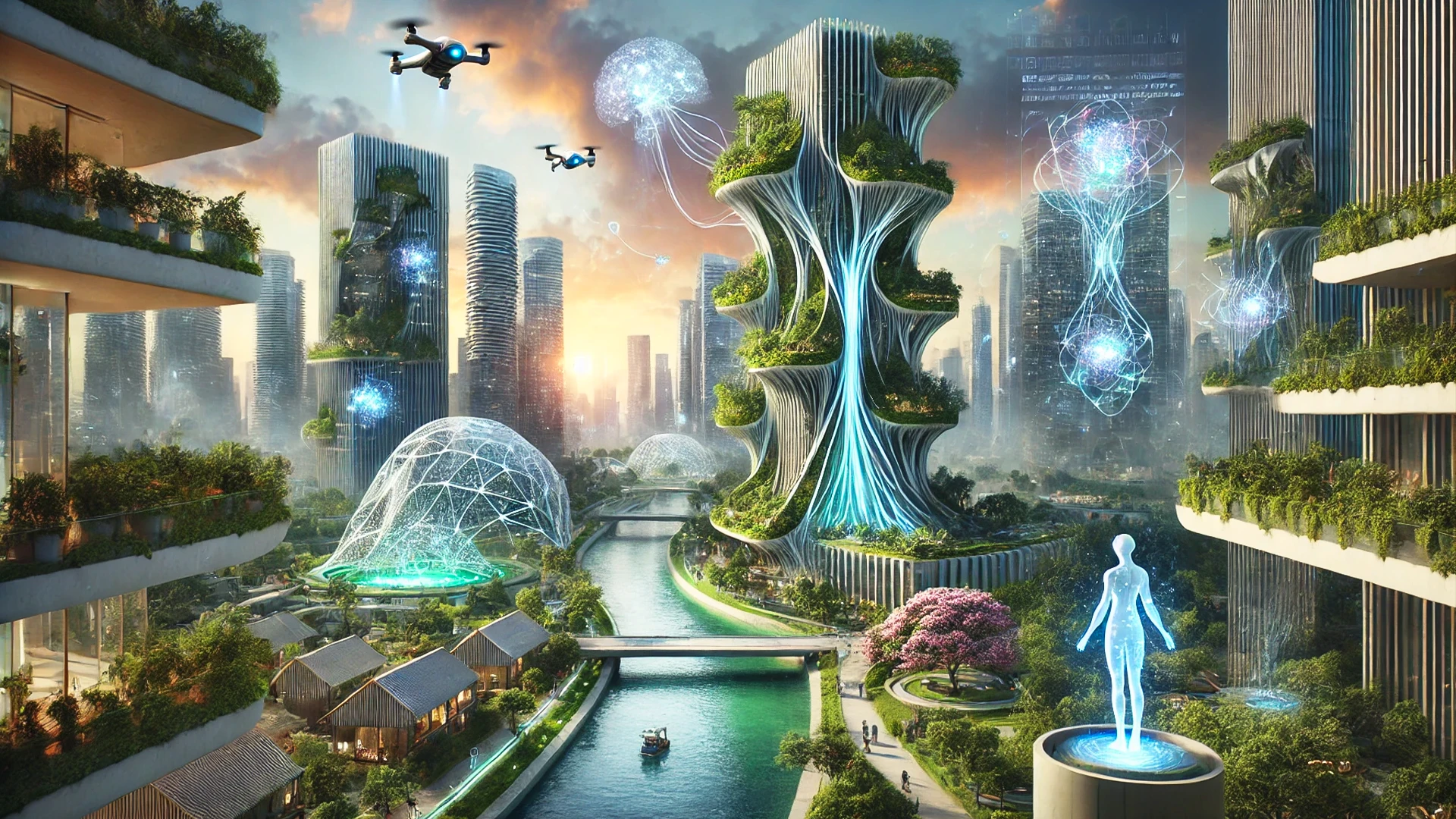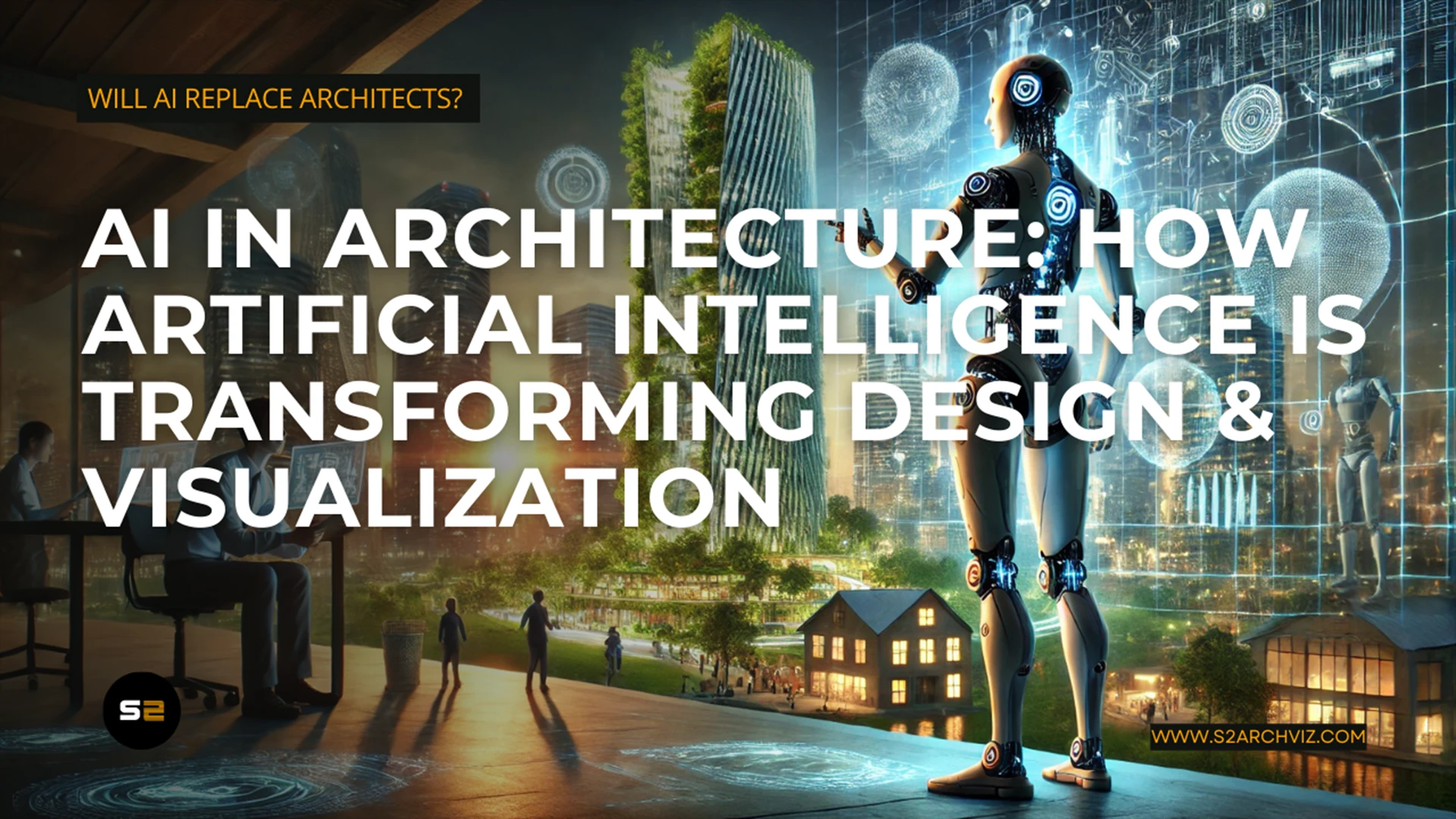AI in Architecture: How Artificial Intelligence is Transforming Design & Visualization
Introduction: AI’s Role in the Future of Architecture
Artificial Intelligence (AI) is no longer just a futuristic concept—it’s here, and it’s reshaping how architects design, visualize, and construct buildings. From AI-driven generative design to real-time rendering enhancements, AI is transforming workflows, making them faster, smarter, and more efficient.
However, this technological revolution brings an important question: Will AI replace architects? The short answer? No. While AI excels at automation, architecture is an art form that relies on creativity, critical thinking, and human intuition—qualities AI cannot replicate. Instead of replacing architects, AI is becoming an indispensable tool to augment and enhance their capabilities.
In this guide, we explore how AI in architecture is shaping the industry, which tools are leading the charge, and why architects who embrace AI will thrive in the future.
How AI in Architecture is Revolutionizing Design
1. AI-Powered Generative Design
AI can analyze constraints like site conditions, climate, material efficiency, and budget to generate optimized design solutions in seconds. Tools like Autodesk Dreamcatcher and Rhino’s Grasshopper AI plugins empower architects to explore endless design variations quickly.
2. Smart Space Planning & Optimization
AI can evaluate spatial relationships and user behavior to propose the most efficient layouts for residential and commercial buildings.
3. Parametric & Algorithmic Design
AI-powered parametric design tools create complex geometries and organic forms that were previously difficult to achieve manually, unlocking new possibilities in architecture.
AI in Architectural Visualization & Rendering
1. AI-Powered Rendering Engines
AI is making high-quality rendering faster and more realistic:
- NVIDIA AI Denoiser reduces noise in renders, delivering crisp images instantly.
- Lumion AI & Enscape AI streamline real-time rendering for immersive visualizations.
2. AI-Generated Concept Art & Materials
- Midjourney & Stable Diffusion generate rapid concept visuals for early-stage design exploration.
- AI enhances textures, lighting, and materials, making renders more photorealistic.
AI-Driven Building Information Modeling (BIM) & Data Analytics
AI-powered BIM tools enhance real-time decision-making, reducing errors and optimizing construction efficiency.
1. Real-Time Project Analysis
AI can integrate with Revit & ArchiCAD to predict construction risks, costs, and sustainability metrics, helping architects make informed decisions.
2. AI-Driven Urban Planning & Sustainability
AI can analyze traffic flow, environmental impact, and zoning regulations to create more efficient cities and sustainable developments.
The Top AI Tools Every Architect Should Know
- Midjourney & Stable Diffusion (AI-generated architectural concepts)
- NVIDIA AI Denoiser (AI-driven rendering)
- Spacemaker AI (Urban planning & site optimization)
- Rhino + Grasshopper AI plugins (Generative AI design)
- Autodesk Dreamcatcher (AI-assisted generative architecture)
Will AI Replace Architects?
This is the question every architect is asking.
1. What AI Can Do
✅ Automate repetitive tasks like drafting, rendering, and cost estimation
✅ Optimize designs using data-driven insights and predictive modeling
✅ Enhance visualization with AI-based real-time rendering and material generation
2. What AI Cannot Do
❌ Replace human creativity, intuition, and artistic vision
❌ Understand cultural, emotional, and historical design contexts
❌ Take over client relationships, on-site decision-making, and problem-solving
3. AI as a Tool, Not a Threat
Rather than replacing architects, AI is a powerful tool that enhances their skills and efficiency. Architects who embrace AI will outperform those who resist it, gaining an edge in speed, precision, and innovation.
The Future of AI in Architecture
- AI-driven smart cities integrating automation and sustainability.
- AI-powered robotic construction for rapid, precise building fabrication.
- AI-driven sustainability models to reduce waste and improve energy efficiency.

FAQ: Common Questions About AI in Architecture
1. Can AI replace architects?
No. AI enhances efficiency but cannot replace human creativity, problem-solving, or the artistic aspects of architecture.
2. What are the best AI tools for architectural design?
Top AI tools include Rhino + Grasshopper AI, Autodesk Dreamcatcher, Spacemaker AI, and AI-driven rendering tools like NVIDIA AI Denoiser.
3. How does AI improve rendering and visualization?
AI-powered denoisers, real-time rendering engines, and AI-based materials dramatically reduce rendering times while improving realism.
4. Can AI make architecture more sustainable?
Yes! AI optimizes material usage, energy efficiency, and urban planning to create eco-friendly and cost-effective designs.
5. How can architects integrate AI into their workflow?
Architects can start by experimenting with AI-driven concept tools like Midjourney for design ideation and AI-powered rendering engines for visualization improvements.
Conclusion: Architects & AI – A Powerful Collaboration
AI in architecture is a game-changer, but not a replacement for human creativity. The architects who embrace AI will gain a competitive edge, working smarter and more efficiently while creating even more innovative and sustainable designs.
What are your thoughts on AI in architecture? Will you embrace AI as a tool or see it as a challenge? Let us know in the comments!
Want to see how design and visualization can bring your architectural ideas to life? Contact S2ArchViz for cutting-edge rendering solutions! 🚀


